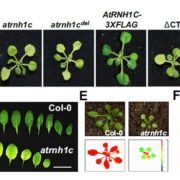
Thrown for a Loop: How RNase H1 and DNA Gyrases Limit R-loops and Maintain Genome Stability in Chloroplasts
Blog, Research, Research Blog, The Plant Cell, The Plant Cell: In BriefWe all know that DNA is the stable nucleic acid, in comparison to its flighty, unstable cousin RNA, right? Well, unusual things happen when metabolic processes require DNA to unwind from its stable, redundant double-helical form. For example, during transcription, the RNA that exits RNA polymerase can…
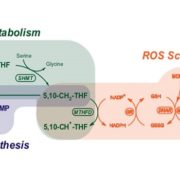
Folate Metabolism Linked to Redox Balance in Arabidopsis
Blog, Research, Research Blog, The Plant Cell, The Plant Cell: In BriefFolates are soluble B9 vitamins with essential functions in all kingdoms of life—both in organisms that produce these vitamins de novo (fungi, plants, and most microorganisms) and in those that do not (animals). As essential cofactors in one-carbon transfers, different folate species mediate the biosynthesis…
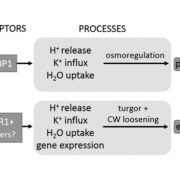
Protoplast Swelling Requires AUXIN BINDING PROTEIN1
Blog, Plant Physiology: On The Inside, Research, Research BlogConvincing molecular and biochemical evidence exists that members of the TRANSPORT INHIBITOR RESPONSE1/AUXIN SIGNALING F-BOX PROTEIN (TIR1/AFB) receptor family are auxin receptors that trigger auxin-induced gene expression and hypocotyl growth through enhanced expression of SMALL AUXIN UP RNA genes.…

LAZY Genes Control Gravity Responses
Blog, Plant Physiology, Plant Physiology: On The Inside, Research, Research BlogPlant architecture is shaped by innate developmental programs as well as by adaptive responses to environmental cues. For example, the primary growth axis of shoots and roots is vertical, with lateral branches adopting some characteristic angle with respect to the main axis. If the main axis is tipped…

Imaging of Light Absorption and Photosynthesis
Blog, Plant Physiology: On The Inside, Research, Research BlogDue to its ease of use and noninvasive nature, variable chlorophyll fluorescence techniques have become increasingly popular for estimating photosynthetic parameters. Most measurements of variable chlorophyll fluorescence in complex plant tissues and surface-associated cell assemblages (e.g. biofilms)…
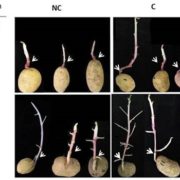
Suc Signals Induce Etiolated Stem Branching
Blog, Plant Physiology, Plant Physiology: On The Inside, Research, Research BlogPlant shoot branching is determined by apical dominance, a process in which the apical bud (shoot tip) inhibits the outgrowth of axillary buds further down the stem to control the number of growing branches. In response to this inhibition, plants have evolved rapid long-distance signaling mechanisms…
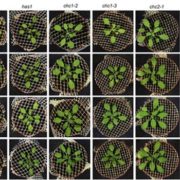
Clathrin and Stomatal Function
Blog, Plant Physiology, Plant Physiology: On The Inside, Research, Research BlogVesicle traffic to and from the plasma membrane plays an integral role in regulating protein localization and activity, membrane composition, and cell surface area. Clathrin is a structural protein that forms a lattice-like complex composed of two H chain subunits (CHC1 and CHC2) and two light chain…
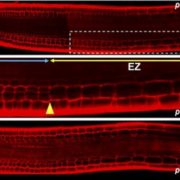
Cell Fate Specification in Arabidopsis Roots
Blog, Plant Physiology: On The Inside, Research, Research BlogPattern formation in multicellular organisms is the result of coordinated cell division and cell fate determination. In animals, cell fate is determined mainly by a cell lineage-dependent mechanism, whereas positional information is thought to be the primary determinant of cell fate in plants. Currently,…
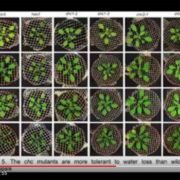
Author Interview: Emily Larson
Blog, Plant Physiology, Plant Physiology: Editorials, Research, Research BlogGeraint Perry from GARNet (@GARNetweets) interviewed Emily Larson (@erlarson_phd), author of "Clathrin Heavy Chain subunits coordinate endo- and exocytic traffic and affect stomatal movement" published recently in Plant Physiology.
Emily Larson from the University of Glasgow talks clathrin, balloons…

